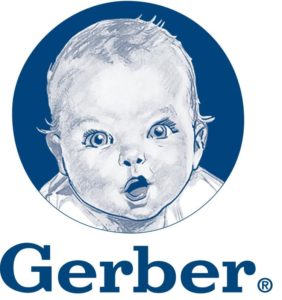
The DFW Hospital Council posts guest blogs by our Associate Members. The following was provided by Gerber.

By Heidi Storm, Clinical Sciences Sr. Manager at Gerber
Breastfeeding is the best way to nourish an infant, and it is recommended as the sole source of nutrition for infants up to 6 months of age by the American Academy of Pediatrics (AAP).1 A recognized advantage of human milk is the immunologic support it provides the infant.2 Much activity has evolved around breastmilk human milk oligosaccharides, or HMOs, the 3rd most abundant solid component of human milk. HMOs are diverse carbohydrates found in breastmilk, and more than 200 different HMOs have been identified. HMOs are involved in the development of the infant’s intestinal tract, brain, and immune system.3
As much as 70-80% of the immune system resides as part of the gastrointestinal tract, where HMOs initiate their impact. HMOs help balance the microbiota and have at least three ways of providing immune system support to the infant. One means is via their role as prebiotics, meaning they are utilized as food for specific types of bacteria that are considered beneficial for the infant.3 A second function of HMOs is their ability to act as decoys against potentially pathogenic microorganisms.4
A third mechanism of HMOs is their ability to improve immune cell communication. HMOs influence cytokines, which are proteins secreted by certain cells of the immune system and can help regulate immune and inflammatory responses of other cells. In a study where babies were fed infant formulas with or without an HMO, cytokine levels in the infants fed formula with HMOs were more like those of breastfed infants, compared to infants fed the HMOfree formula.5
Another trial demonstrated that the addition of HMOs to infant formula was associated with fewer reported episodes of bronchitis, fewer lower respiratory tract infections, and less use of antibiotics and medications for fever compared to infants fed formula without an HMO.6
Because of the benefits that HMOs offer via breastmilk, an HMO ingredient has also been introduced into some infant formulas in the U.S. The first HMO selected for infant formula was 2’Fucosyllactose, or 2’FL. 2’FL HMO is a prebiotic oligosaccharide, and the most prevalent human milk oligosaccharide, making up about 30% of all HMOs. Due to its prevalence in human milk and its ability to be produced in a bioequivalent, structurally identical form to the 2’FL in breastmilk, 2’FL HMO, previously mentioned as studied in infant formulas is currently added to some infant formulas in the U.S.5
Breastfeeding remains the best choice for nourishing an infant. For mothers unable to breastfeed, and for those mothers who choose to use infant formula during their infants’ first year of life, formulas with HMO are an option that may provide support to their infants’ developing immune system.
REFERENCES
1. American Academy of Pediatrics, Section on Breastfeeding. Breastfeeding and the Use of Human Milk Policy Statement. Pediatrics. 2012; VOL (3): 827-841.
2. Field C. The immunological components of human milk and their effect on immune development in infants. The Journal of Nutrition. 2005; 135 (1):1–4.doi.org/10.1093/in/135.1.1
3. Bode L. Human milk oligosaccharides: every baby needs a sugar mama. Glycobiology 2012;22:1147-1162.
4. Newberg DS. Oligosaccharides in human milk and bacterial colonization. J Pediatr Gastroenterol Nutr 2000;30:S8-S17.
5. Goehring KC, Marriage BJ, Oliver JS, Wilder JA, Barrett EG, Buck RH. Similar to Those Who Are Breastfed, Infants Fed a Formula Containing 2’-Fucosyllactose Have Lower Inflammatory Cytokines in a Randomized Controlled Trial. J Nutr 2016;146:2559-2566.
6. Puccio G, Alliet P, Cajozzo C et al. Effects of infant formula with human milk oligosaccharides on growth and morbidity: A Randomized Multicenter Trial. J Pediatr Gastroenterol Nutr 2017;64:624-631
Gerber – Important Immunological Components in Mother’s Milk
12/03/2018